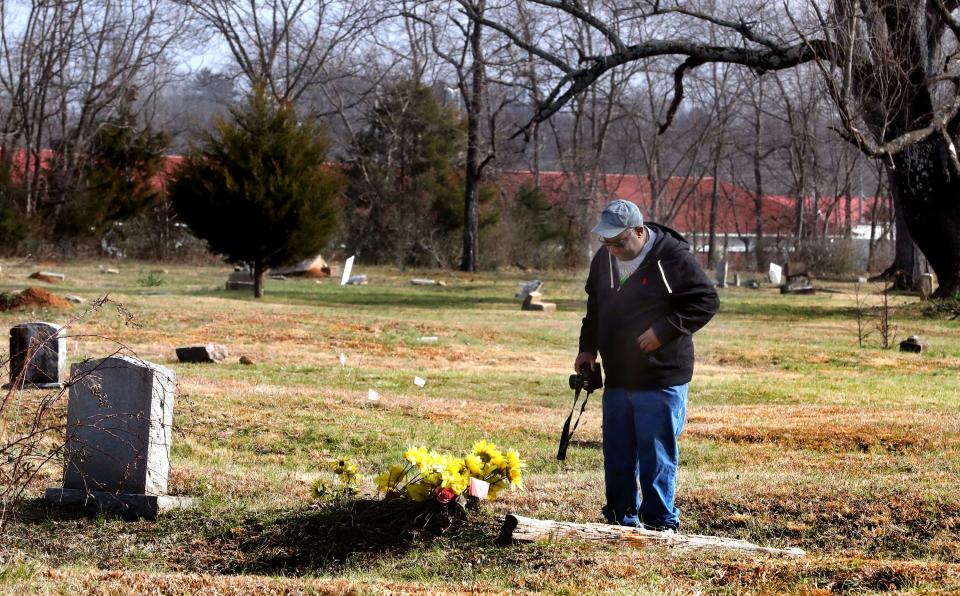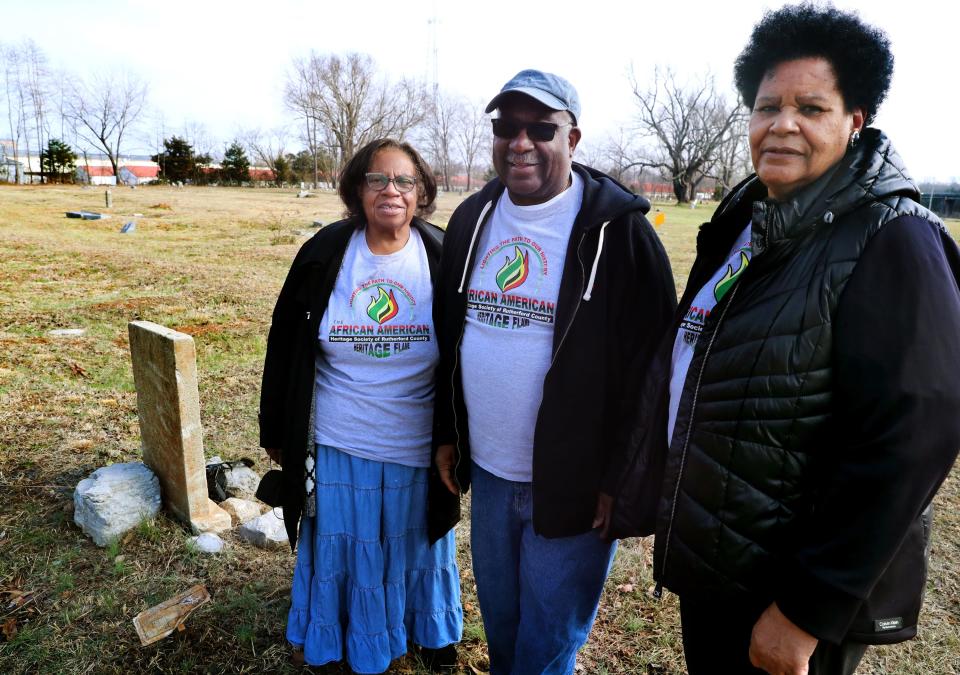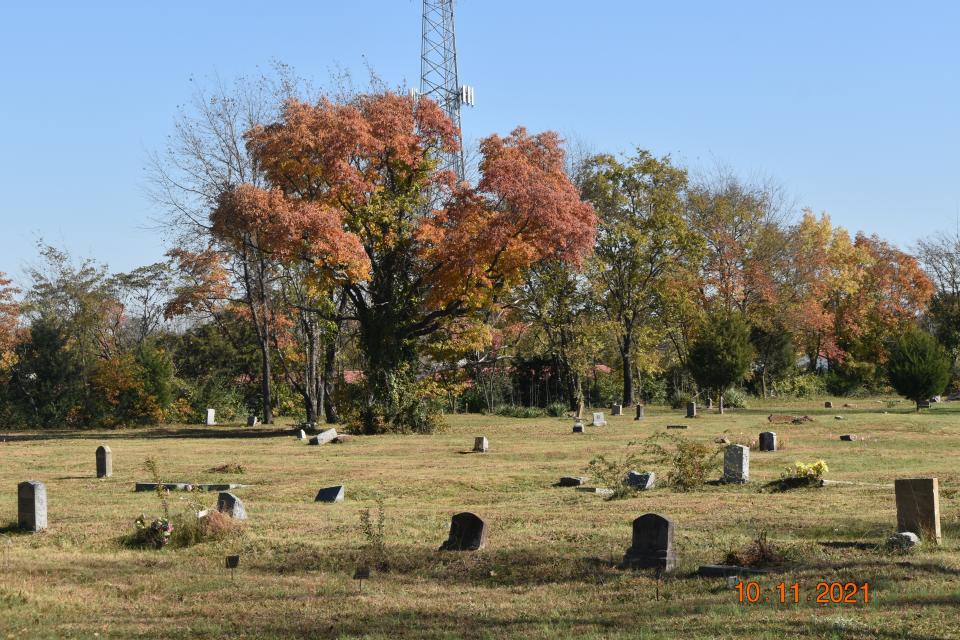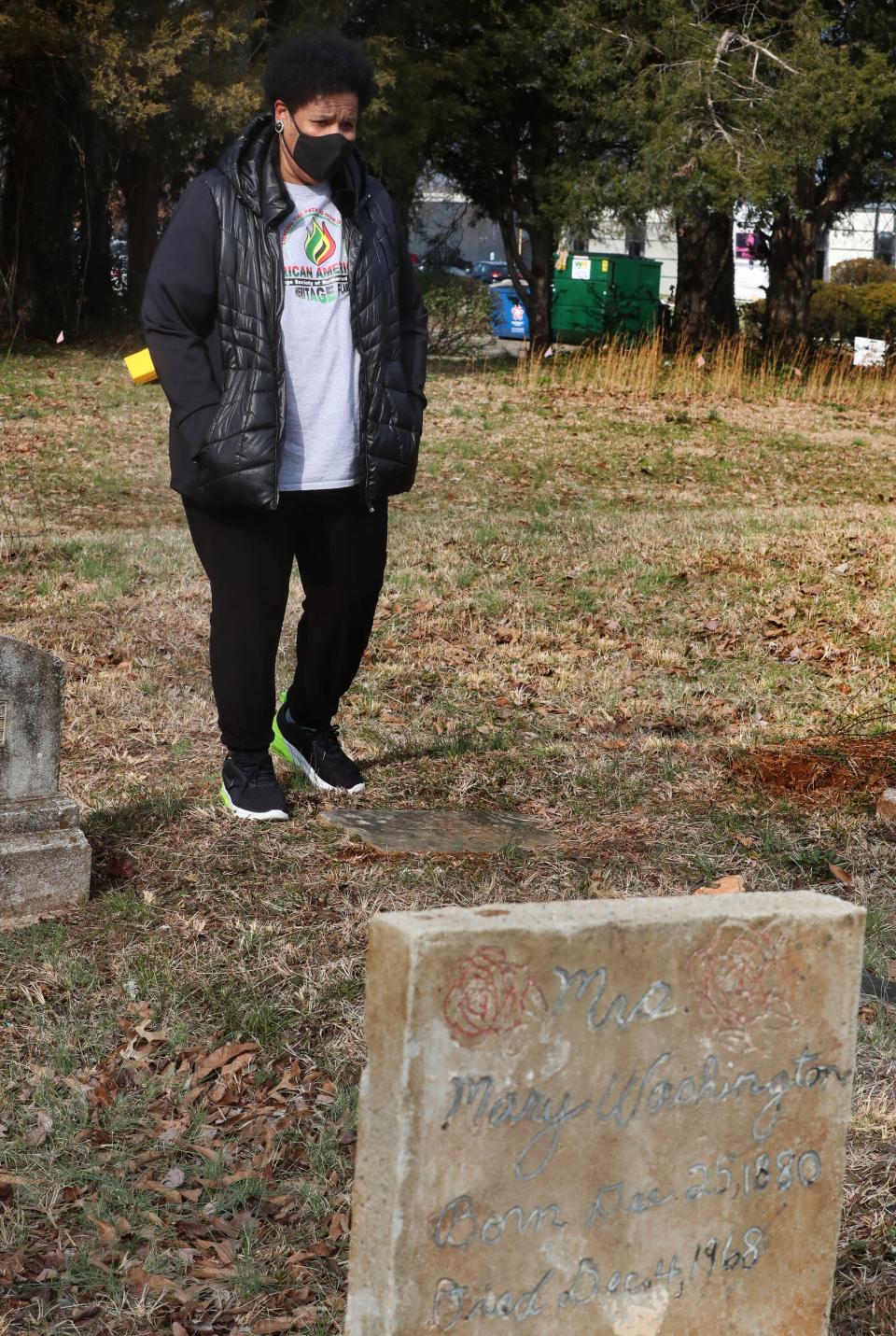Benevolent Cemetery starts process to earn spot on National Register of Historic Places
Editor's note: According to Carroll Van West, director of Middle Tennessee State University's Center for Historic Preservation, the Tennessee State Review Board approved the application for the Benevolent Cemetery to be placed on the National Register of Historic Places at Wednesday's meeting.
Murfreesboro's Benevolent Cemetery is easy to miss — unless you're glancing over the southbound side of the Church Street Bridge near downtown. The overpass towers above an 8-acre plot of land bordered by industrial buildings on Park Avenue and busy railroad tracks.
There's often litter and overgrown foliage obscuring the view of graves. But the remaining tombstones, many nearly illegible, represent a large chunk of history of the local Black community. Dating back to 1897, the cemetery served as the final resting place of men, women and children as Jim Crow tightened its grip during the decades following the Civil War and Reconstruction.

"It's so important (to preserve it) because this is the only know African-American cemetery in the city," said Mary Watkins, president of the African American Historical Society of Rutherford County.
MURFREESBORO: Oaklands Mansion and MTSU search for evidence of the enslaved in Murfreesboro
Count Watkins as one of many locals hoping the historic site earns a spot on the National Register of Historic Places.

Meanwhile, Carroll Van West, director of Middle Tennessee State University's Center for Historic Preservation, will be in attendance Wednesday as the Tennessee State Review Board reviews the cemetery's application.
It’s the first step in the process to approval.
"If that is accomplished, we're hoping we can get some funding from the federal government for the restoration of the cemetery," said Margaret McKinley, secretary of the African American Historical Society of Rutherford County.

For decades, Black residents were laid to rest in the city cemetery on Vine Street and others are in Section M of Evergreen Cemetery near the area where enslaved of the former Oaklands Plantation are buried in unmarked graves. A current project is ongoing to geo-map the location of unmarked graves at Oaklands and pay homage to the enslaved.
'SACRED GROUND': Cemetery discovered among brush now under restoration
The cemetery was established on land purchased by the trustees of Benevolent Lodge No. 11, a local chapter of the state Benevolent Society, an African American organization founded in Nashville in 1865.
The property was deeded to Murfreesboro’s Allen Chapel A.M.E. Church in 1988 and remains the largest private African American burial ground within Murfreesboro.
Burials are recorded from 1897 through 2002, with the majority occurring before the 1970s.
In decent years, interest in the cemetery fluctuated and it fell into disrepair. Grass and brush covered gravesites and the elements were not kind to tombstones, with writing often obscured due to weathering.

Eagle Scouts in 1991 and 1994 cleaned up the cemetery as part of their final projects, including the addition of a sign marking the location and the recording of 320 marked graves. Also, Allen Chapel members in 2017 cleaned the cemetery. Two years later, a retired archivist began cataloguing those interred. Research is ongoing. So far, there are 800 known graves, Watkins said.
In 2021, the African American Heritage Society of Rutherford County paid for a Tennessee historical marker that was dedicated on Veterans Day (Nov. 11).
Reach reporter Nancy DeGennaro at degennaro@dnj.com. Keep up with restaurant news by joining Good Eats in the 'Boro (and beyond) on Facebook and follow Murfreesboro Eats on TikTok.
National Register of Historic Places
The Tennessee State Review Board approved the following nominations for National Register:
Benevolent Cemetery, Rutherford County
Emory Place Historic District, Knox County
Georgetown Road (Trail of Tears segment), Meigs County
Howell Nurseries, Knox County
The board approved the removal of these locations that are no longer extant:
The Hibbettage, Davidson County
Newton Copeland House, Shelby County
Sevierville Masonic Lodge, Sevier County
This article originally appeared on Nashville Tennessean: Benevolent Cemetery start National Register of Historic Places process

